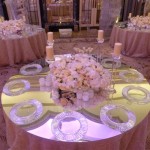Mirror Edges Turning Black: Causes and Solutions
The appearance of black edges on mirrors can be a frustrating issue, detracting from their aesthetic appeal and raising concerns about the mirror's integrity. This phenomenon is often attributed to several factors, ranging from environmental conditions to the manufacturing process itself. Understanding the underlying causes is crucial for effective prevention and remediation.
Environmental Factors
Exposure to certain environmental conditions can accelerate the deterioration of mirror edges, leading to the characteristic blackening. High humidity levels, for example, create an ideal environment for the oxidation of the reflective silver layer, especially at the vulnerable edges where the protective backing is often thinner or absent. Similarly, prolonged exposure to harsh chemicals, such as cleaning agents containing ammonia or bleach, can erode the protective layers and expose the silver to the elements, contributing to discoloration.
Manufacturing Defects
The manufacturing process itself can sometimes introduce vulnerabilities that make mirrors more susceptible to edge blackening. Imperfect sealing around the edges can allow moisture and other corrosive substances to penetrate and attack the reflective layer. Similarly, inconsistencies in the application of the protective backing can leave certain areas more exposed and prone to degradation.
Silvering Degradation
The blackening of mirror edges is often a direct result of the degradation of the silvering, the reflective layer that gives the mirror its characteristic properties. This silver layer is typically protected by a copper layer and paint, but over time, these protective layers can break down, exposing the silver to the atmosphere. The exposed silver then reacts with sulfur compounds in the air, forming silver sulfide, which appears black.
Types of Mirror Backing
Different types of mirror backing offer varying levels of protection against edge blackening. Traditional silver-backed mirrors are generally more susceptible to this issue due to the silver's reactivity. More modern alternatives, such as copper-backed mirrors with a protective sealant, offer improved resistance to oxidation and corrosion, reducing the likelihood of black edge formation.
Prevention Techniques
Several preventative measures can be taken to minimize the risk of mirror edges turning black. Ensuring adequate ventilation in bathrooms and other high-humidity areas can help prevent moisture buildup. Avoiding the use of harsh chemicals near mirror edges is also crucial. Opting for mirrors with high-quality backing and sealant during installation can provide enhanced long-term protection.
Restoration and Repair
In cases where black edges have already appeared, several restoration methods can be attempted. Specialized mirror edge sealants are available that can be applied to the affected areas to prevent further deterioration. For more severe cases, professional resilvering might be necessary, although this process can be costly and may not be feasible for all types of mirrors.
Choosing the Right Mirror
When selecting a mirror, considering the environment it will be placed in is crucial. For high-humidity environments, opting for mirrors specifically designed for bathroom use is advisable. These mirrors typically feature enhanced protection against moisture and other environmental factors. Checking the manufacturer's warranty and looking for certifications that indicate resistance to corrosion can also help ensure the mirror's longevity.
Proper Cleaning Techniques
Employing appropriate cleaning methods is vital for maintaining the integrity of mirror edges. Using gentle cleaning solutions and avoiding abrasive materials can prevent scratches and damage to the protective layers. Wiping the mirror edges dry after cleaning helps prevent moisture buildup, further reducing the risk of blackening.
Long-Term Maintenance
Regular inspection of mirror edges can help identify early signs of deterioration, allowing for prompt intervention. Reapplying sealant to the edges periodically, especially in high-humidity environments, can provide additional protection. By implementing these preventative and maintenance measures, the lifespan of mirrors can be significantly extended, preserving their aesthetic appeal and functionality.

Repair Or Replace Desilvering Bathroom Mirror Solution For Black Edges

How To Repair Desilvering What Do About Black Edges On Mirrors

Why Do The Edges Of A Mirror Turn Black Glass Depots Raleigh Nc

Deslivering 101 What Causes Dark Edges Around Mirrors Glass Com

Is This Tde Or Tue Atm Optics And Diy Forum Cloudy Nights

Mirror Cap Turn Signal Smooth Black Ptm Passenger Side Right Rh For Ford Edge

Delightful Dwelling T Out A Plain Jane Mirror

2024 For Ford Edge Black Right Passenger Side Rearview Mirror Cap Cover S

Luxury Makeup Mirror Black Wavy Edge Phone Case For Iphone 13 12 11 14 Pro Max With Faux Pearl Chain Shockproof Back Cover Shein Asia

Turn Of The Century French Carved Wooden Mirror With Stylized Foliage Motifs English Accent Antiques








